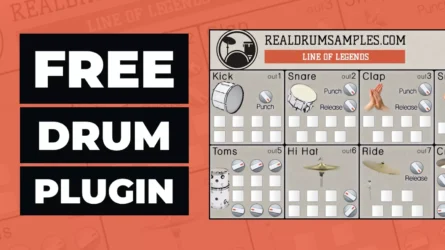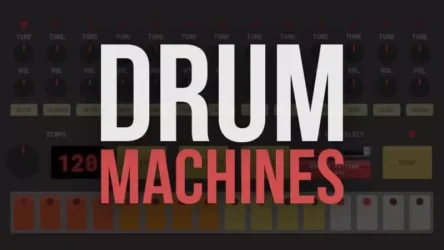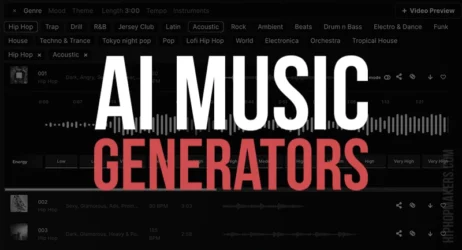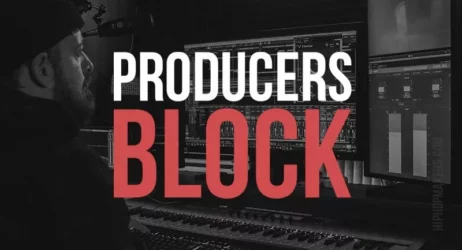This simple guide will explain what a melody in music is, how they are used, provide melody examples, and give you ideas for creating melodies on your own.
- What Is A Melody in Music
- How to Use Melodies in Music
- What is An Example of A Melody
- Melody vs. Harmony
- How Do You Create A Melody
- How Do I Get Melody Ideas
What Is A Melody in Music?
A melody is a sequence of musical notes that are repeated multiple times and are usually the most memorable parts of a song. A song can consist of multiple melodies of different musical instruments that blend together to create the final music track.
It can be a passionate vocal line, a raging guitar riff, or a frantic saxophone run.
Melodies may be complex or straightforward. They may be used alone or in a more complicated arrangement with different melodies.
Melody is a symphony of notes that the listener perceives as a single thing. The melody of a song is a combination of pitch and rhythm that sits in front of the background components. Melodic sequences are musically pleasing and are often the most remembered aspect of a song.
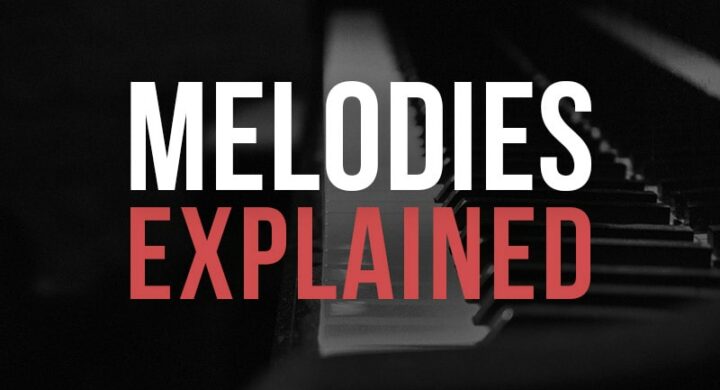
A melody in a piece of music is made up of two main elements:
- Pitch: The real audible vibration generated by an instrument is referred to as this. These pitches are organized as a sequence of notes, such as C4 or D#5.
- Duration: The length of time that each pitch will sound is also included in the definition of melody. Whole notes, half notes, quarter-note triplets, and other lengths are used to split these durations.
Melodies define the music you know and love since they’re the portion of music you’re most likely to remember.
As a result, melodies are essential in all types of music.
A melodic phrase typically includes a full musical statement, much like a sentence or clause in spoken discourse.
A melodic phrase typically defines itself by resting, holding, or coming to the point of resolution (rhythmically and/or tonally) and is closely linked to natural breathing regions, particularly in vocal music. Short phrases are often combined to create larger phrases.
The human voice and any other tool that generates pitches, such as flutes, glockenspiels, marimbas, synthesizers, guitars, and so on, create melodies. It is essential to remember that melodies are straight lines of single notes when creating your own.
Related: 15 Free Online Melody Makers to Create Melodies | What Is A Chorus
How to Use Melodies in Music?
In music, composers and songwriters use melodies to convey tales and give listeners something to remember and connect with. Melodies are often heard in music as verse, chorus, and bridge vocal lines, but instrumental melodies are equally significant.
Every musical instrument makes use of melody. Consider the following scenario:
- Choral singers sing melodies as a group. Some choruses sing the same notes in unison, like in ancient Greek traditions. Others, such as church choir choruses, sing harmonized melodic lines that follow a predetermined chord progression.
- When solo singers perform a song’s primary subject, they utilize melody.
- Percussion instruments also play melodies, although their melodies are based on rhythmic durations rather than pitch. On the other hand, all audible drums have pitches, which are occasionally notated in sheet music.
What is An Example of A Melody?
Melody is known as the king of today’s popular music. Three basic components of pop music are often recycled:
- time intervals (120 bpm is particularly popular)
- progressions of chords (like I – V – vi – IV)
- topics with poetic content (love, heartbreak, personal liberation)
As a result, the melody must bear a tremendous burden to distinguish one song from another. For example, Eminem’s “Love the Way You Lie” and Maroon 5’s “Girls Like You” contain the same chord sequence but sound completely different. Each song is carried by its melody, which makes it stand out.
Melodies may be brief or lengthy in length. A “musical phrase,” a “motif,” or a “riff” are all terms used to describe a short melodic line. Longer sections, such as the whole vocal line of a chorus in popular music or an entire area in a Mozart or Wagner opera, may also be considered melodies.
What’s the Difference Between a Melody & Harmony?
Now that I’ve learned what melodic music is, how does it compare to harmony? Melody and harmony are two important musical elements in music creation.
Harmony is the accompaniment of melody, which is described as a remarkable collection of pitches.
When several notes are piled on top of each other to produce a distinct sound, it is called harmony. Two or more sounds are played simultaneously in harmony, and the outcome should be acoustically pleasant, with the tones complementing one another.
The fundamental distinction between harmonies and melodies is that harmony develops on an existing melody, while a melody is required for harmony to exist.
It’s worthwhile to attempt to pick out the melody when listening to your favorite songs. You may improve your hearing and distinguish the melody from the other musical elements by training your ear. Melodies may be simple or complicated, and they are a critical element of both music and our daily life.
How Do You Create A Melody?
The melody is an essential component in making music memorable and catchy. As a result, we as listeners prefer to recall this series of notes, pitch, and rhythm. Let’s have a look at how we can create a tune utilizing these fundamentals.
Locate and scale the key: Knowing the key and scale can help you figure out the notes to utilize for the melody. For example, if you’re composing in E Major, you may use E, F, G, A, B, C, and D notes.
Collaboration with a singer: It’s important to find out if they have a favorite key to sing in since this can save you time later in the composing process when you have to transpose the music.
Make a few chords: Any music relies heavily on chords. For example, if you already have a chord sequence, creating a melody to go with it will be a lot simpler.
Playback and recording: You may pick the finest portions and edit them together due to auditioning and recording your thoughts.
How Do I Get Melody Ideas?
Some musicians have a flair to come up with the perfect melody. Most of the time, the most incredible melody pieces are excellent because they work so well with the lyrics and, of course, the chord progression. Keep in mind that the suggestions as mentioned below to get the ball rolling. They’ll assist you in generating a brief musical concept, from which you may perhaps progress.
Manipulate melodies that have already been composed:
This may be an enjoyable method to come up with fresh ideas. Take a tune that you have been familiar with and like for a long time. It may be your own or someone else’s – for example, the melody from a favorite song.
Use a chords-first approach to songwriting:
Renowned composers traditionally used melodies as a starting point. However, no melody is excellent unless a powerful, supporting chord progression accompanies it.
Work with the bass line:
That bass line may be used in a variety of ways. You don’t have to maintain the same intervals if you produce melodies that move in the opposite direction of the bass line. Simply selecting a technique that reverses the bass line’s direction may be enough to let some melodic ideas emerge.
Melody Overview
A melody is a sequence of notes that has the ability to evoke an emotional response in listeners. The term “melodic” can also be used as a synonym for “harmonic.” A melody may consist of one or more voices, and it may have any number of pitches.
I’ve seen that music consists of basic elements such as melody, harmony, and rhythm. These building blocks make every genre of music, from pop music to classical music, unique and enjoyable.
A melody, generally speaking, is a sequence of musical tones or notes played in a particular order. This sequence, also known as a melodic line, can be as simple as only one note or complex with many different notes.
For instance, “One Note Samba,” a popular music piece, is a great example of a melody consisting of just one pitch, proving that even with only one note, a memorable melody can be crafted.
On the other hand, most melodies in Western music often consist of a series of notes, which might include stepwise motion (one note to the next) or disjunct motion (jumping from one note to another), giving birth to a more complex melody.
Sheet music is a way of using music notation to write melodies, with the treble clef often used for vocal melodies and the bass clef for lower vocal parts or instruments.
This is a critical part of music theory, helping us to understand the rules and structure of writing and playing music.
Musical composition is a process of crafting own melodies, working with chord progressions, and aligning the melody with harmony to create beautiful and compelling sounds.
Whether it’s a single melody or multiple vocal parts, each melody is unique. Yet, some melodies, such as those in popular songs, can be instantly recognizable, becoming a single entity that encapsulates a particular historical period or musical style.
So, whether it’s a simple melody made up of only two notes, a complex melody made up of different forms and many musical phrases, or even a melody with the same melody repeated, it’s all part of the rich tapestry of music.
It’s what makes a good melody great, a beautiful melody unforgettable. Music, in all its glorious variety, from pop to classical, is built on this fascinating foundation of melody.
In conclusion, whether you’re listening to a symphony, humming a pop song, or even writing and playing your own music, remember the importance of melody.
The next time you hear a tune, try to listen to the melody, notice the way it moves, how it combines with harmony, and how it forms the backbone of the piece.
By understanding these elements, you can not only appreciate music more but also start to explore the world of creating your own melodies. From the first note to the last, every piece of music tells a story – and that story is often told through melody.
I hope we answered your question about what is a melody.
Related: What Is Harmony In Music?

